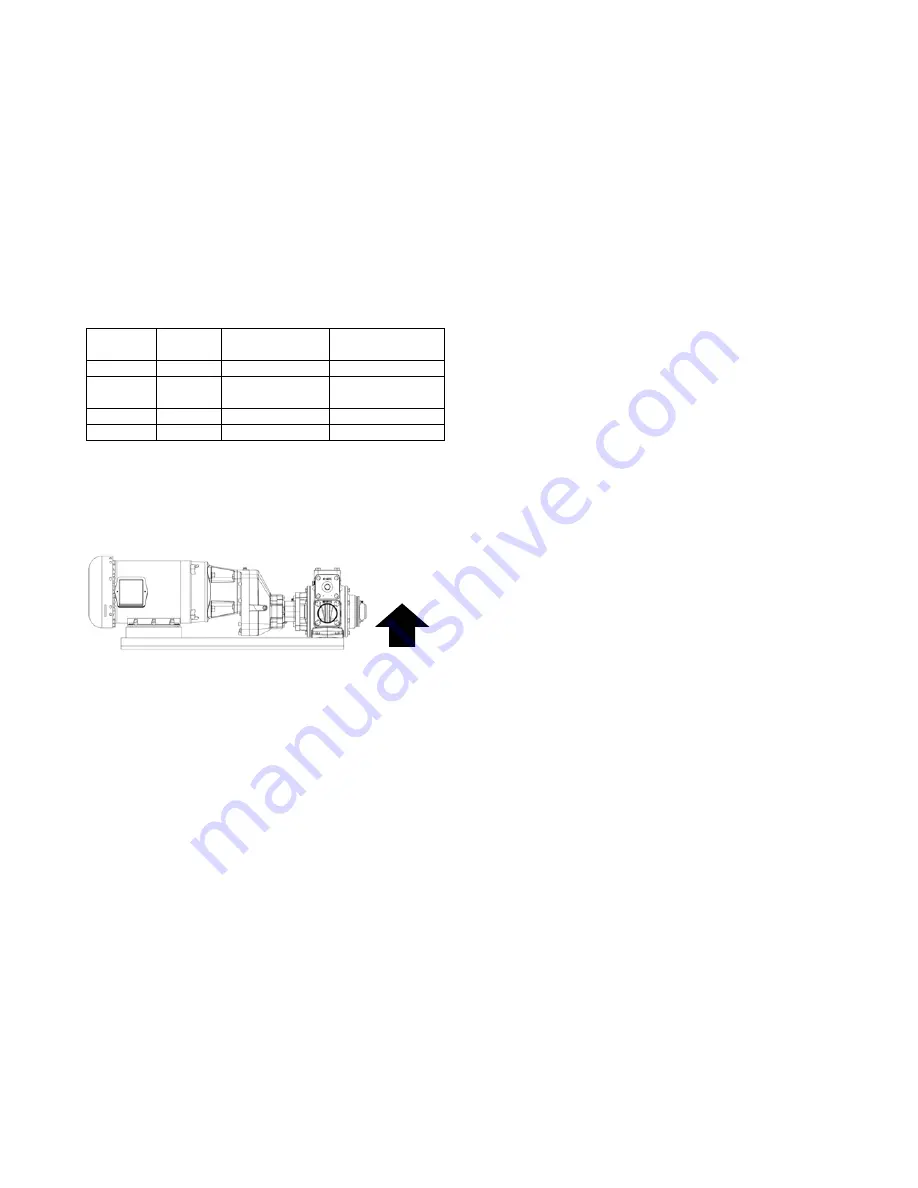
105-B00 Page 13/16
UP
Lubrication
Proper gearbox lubrication is essential in order to reduce
friction, heat, and component wear. Lubricants reduce heat
and wear by inserting a protective “fluid boundary” between
mating parts and preventing direct metal to metal contact.
Lubricants also help prevent corrosion and oxidation,
minimize foam, improve heat transfer, optimize reducer
efficiency, absorb shock loads and reduce noise. Most
NORD reducers are shipped from the factory with a pre-
determined oil fiIl level in accordance to the specified
reducer size and mounting position.
The standard orientation for the gearbox is shown in Figure
9. The gearbox is filled with the correct amount of oil and is
the correct configuration for this orientation. For any other
orientation, please consult the factory.
Lubrication Table
ISO
Viscosity
Oil
Type
Ambient Temp
Range (°F)
Brand
VG220
PAO
-31 to 140
Mobil SHC630*
VG220
MIN-EP
32 to 104
Mobilgear
600XP220
VG220
FG
23 to 104
Fuchs FM220
VG460
PAO
-31 to 176
Mobil SHC 634
*Standard Oil Shipped with Gearbox
Oil Formulation Codes:
MIN-EP - Mineral Oil with EP Additive
PAO - Synthetic Polyalphaolefin Oil
FG - Food-Grade Oil
NOTICE:
The “Ambient Temperature” is intended to be an
operation guideline based upon the typical properties of
all the lubricant. The viscosity and other properties of
the lubricant change based upon load, speed, ambient
conditions, and reducer operating temperatures. The
user should consult with their lubrication supplier &
NORD gear before considering changes in oil type or
viscosity.
To prevent reducer overheating, observe the
maximum operating oil temperature limits:
Mineral Oil: 176 – 180 °F
Synthetic Oil: 225 °F
In the following instances, please consult NORD for
specific recommendations:
o
Gear units will operate in high ambient
temperature conditions exceeding 40 oC
(104 oF).
o
Gear units will operate in cold ambient
temperature conditions approaching 0 oC
(32 oF) or lower.
o
Lower than an ISO VG100 viscosity oil is
being considered for a cold-temperature
service.
o
Fluid grease is required for lubricating the
gear unit.
Observe the general lubrication guidelines outlined
in user manual U10750.
NOTICE:
Do not to mix different oils with different additive
packages or different base oil formulation types.
Polyglycol (PG) oils are not miscible with other oil types
and should never be mixed with mineral oil or
polyalphaolefin (PAO) synthetic oil.
Figure 9 – Standard Gear Reducer Orientation


































